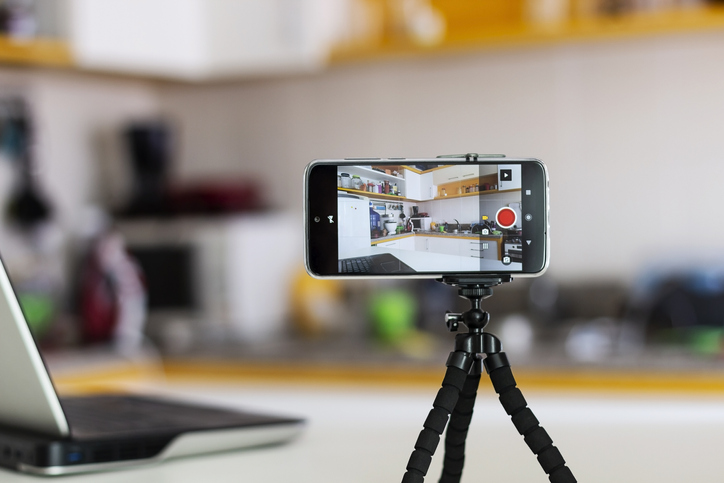
Smart Political Campaigns Should Harness Facebook Live
There are only so many hours in a day, but after knocking on doors and raising money, Facebook Live is something candidates should do on a weekly basis. The ubiquity of live-streaming digital video and Facebook’s drive to increase it on the platform has made it a necessity for campaigns to engage with. Here are some quick tips and a basic explanation of why campaigns should embrace Facebook Live and other online videos.
What problem does Facebook Live solve for your campaign?
It can be hard to meet voters where they are. They may not be primed to engage with you at the door and you can end up running into the same people over and over again at party and community meetings. With Facebook Live, you can meet voters where they are. Facebook Live stands out as a reliable opportunity to define who you are and why you are running on a platform that requires little effort from voters to engage. Using Facebook Live, you can engage with voters on their devices in a way that feels warm and personal.
A wider audience for Live vs. other posts
It has been widely reported that Facebook has increased the reach of Live over the audience pool available through standard Facebook posts. Why not take advantage of the opportunity to reach more people in your voter pool? You can also build out your audience by requesting folks on your email list or people who watch your Live feeds to like your page if they aren’t already following you.
Create a conversation, not just an ad
Facebook Live lets you engage and answer questions from your audience in real-time. This helps the tone of Lives come across as more social and less scripted than a traditional ad. It also gives you the time to talk in more detail than you have room for in a standard 6-, 15-, or 30-second ad. One of the other great things about Facebook Live is that after the real-time broadcast, the recorded video will remain on your feed to get further engagement.
Go long
Facebook Live videos should last longer than traditional online video advertising. The longer a Live video runs, the more time there is for people to join your audience and engage. In short, Facebook Lives can reach more people and drive more engagement the longer they run. We recommend running Facebook Live videos for at least 2-minutes, but we have found that videos longer than 6-minutes also work very well.
Keep a schedule
If you can plan to record a Facebook Live at the same time every week, you can get your audience used to watching the feed on that schedule. Getting your audience used to a specific time can help build engagement and build your base. Even better, you can remind your audience when you’ll be doing your Facebook Live ahead of time through traditional posts or by sending an email out to your list to get more people to watch. Don’t give up if you don’t get a ton of people following your Live feeds right away. An incremental approach can pay off after a few months of consistent, engaging content.
Engage with your audience
Once you start your Facebook Live, make sure you engage with folks who are interacting with the video. For a more personal touch, we recommend that you mention the people who are leaving comments by name when you are answering their questions.
Give a behind-the-scenes look
Facebook Live is especially good for showing folks a view of what is going on in a campaign that they may not usually see. For example, you could show your campaign staff driving to canvas your turf or even record the occasional drive through visit.
Practice your stage presence
Facebook Live provides a great opportunity for candidates to practice taking live questions. Getting comfortable with questions and remaining calm when you’re on the spot is a critical skill you need to develop for debate appearances as well as interactions with voters at the doors.
Provide information for GOTV and early voting
While you can’t record Live at the polls, you can take a video on your way into early voting or on your way to the mailbox to vote by mail. These videos can provide helpful information about when and how to vote that can make it easier for people to vote for you.
Use other social media platforms for video
Facebook Live is a good place to start sending out video content, but it is not the only place to post videos. Make sure you also take advantage of Instagram since it’s already linked to Facebook and has much of the same audience targeting potential. Instagram also has a Live function, as well as the option to create Stories. It’s worth experimenting with Live feeds and Stories that are built solely for Instagram (in addition to Facebook videos) to see what kind of engagement you get from them. You might be surprised to find that there are people you can reach on Instagram that you aren’t getting through to on Facebook. YouTube can also widen the audience potential for your campaign.
Host videos directly on your campaign website
Using a platform like Wistia or Vimeo Pro, you can host video on your website and drive keyword traffic directly to that site. Over time, this can help you build traffic and engagement through your videos. While YouTube is great for reaching a wider audience, using it to host videos on your website can pull focus from your content as YouTube auto-plays other videos from their site after your video finishes.
Practice, Practice, Practice
The more you use Facebook Live, the better you will get at using it. Facebook has a great, free course on recording Facebook Lives that we recommend if you want to learn more. You can also find out more about GOTV from our blog here.